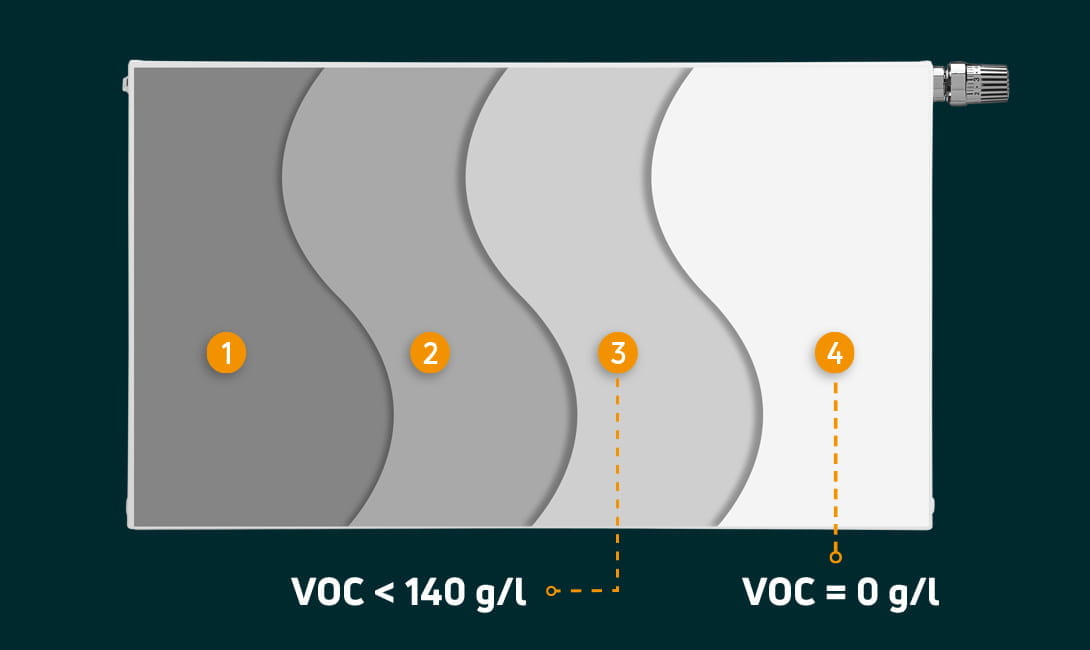- Product info
- Radiators
- Reducing footprint
- News
Radiator coatings: another way we contribute to sustainable building
Our radiators are coated with an anti-corrosion coating that has a VOC count lower than 140g/l. The top coat has a VOC count of 0 g/l, which is considerably better than the set limit of 100 g/l.
The DGNB: Europe’s biggest network for sustainable building
The DGNB is a non-profit organisation that promotes sustainable building in a variety of ways. Although based in Stuttgart, most of its initiatives and projects have an international angle. The association has around 2,000 members from 30 different countries worldwide. The organisation’s activities include, among others, the certification of sustainable buildings. Additionally, based on its expertise, the DGNB lists strict requirements which building materials and products should meet if they want to be classified as sustainable. We are happy to confirm that our panel radiators and design radiators meet the organisation’s requirements.DGNB requirements for radiator coatings
Once a raw radiator has been produced, it needs to be coated with an anti-corrosion coating and a top coat. These processes must comply with certain limit values with regard to volatile organic compounds (VOCs) and heavy metals in the coatings. The limits used by the DGNB for the coating process are:
- Water-soluble anti-corrosion coating: VOC < 140g/l
- Top coat: VOC < 100 g/l
When these limits are respected, minimal exposure to VOCs is ensured.
Minimum amount of VOCs in our radiator coatings
As a leader in sustainable indoor climate comfort solutions, we believe that the perfect indoor climate shouldn’t cost the planet’s climate. Therefore we are very happy to confirm that our panel radiators and design radiators comply with the strict VOC limit values of the DGNB.
The anti-corrosion coating we use on our radiators is a water-dilutable 1K electrocoat with an acrylic resin base and has a VOC count lower than 140g/l. The top coat on our radiators is a powder coating epoxy-polyester that has a VOC count of 0 g/l, which is considerably better than the set limit of 100 g/l. Both coatings are emission-free when the radiator is in heating mode, even at the maximum permissible operating temperatures. Moreover, the anti-corrosion coating and the final coating of our radiators do not contain any lead, cadmium and chrome VI compounds.
Depending on the production site, the coating process meets the requirements of the 31st BImSchV or the European-wide regulation of the regulation 2010/75/EU - Industrial Emissions Directive/Industrial Emissions Directive (IED).
If you have any questions about our radiators or the coatings, feel free to contact us. Those who need an official document that confirms our radiators meet the DGNB requirements, can download the confirmation here.

